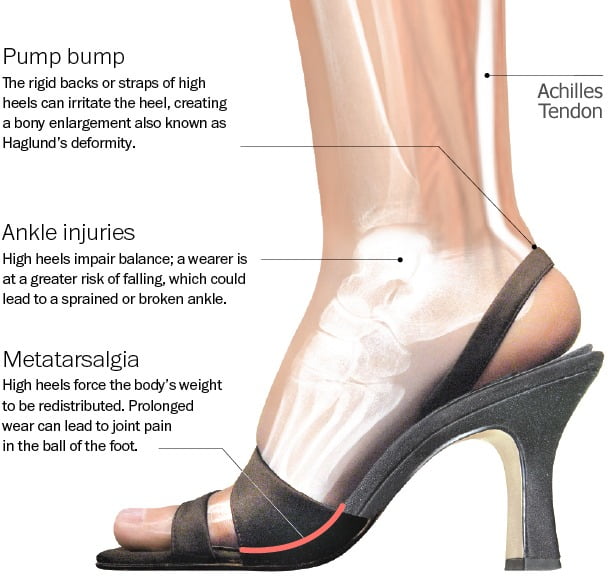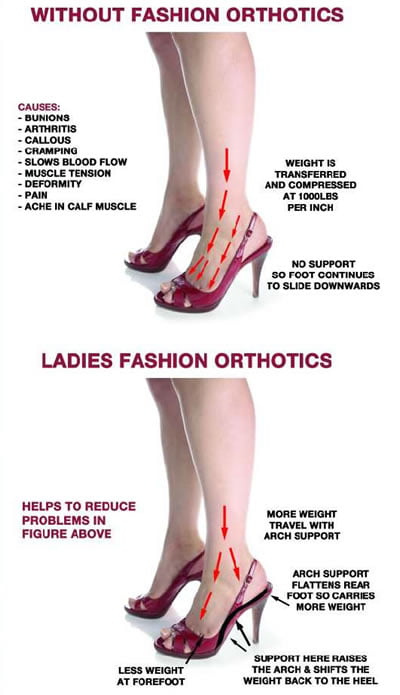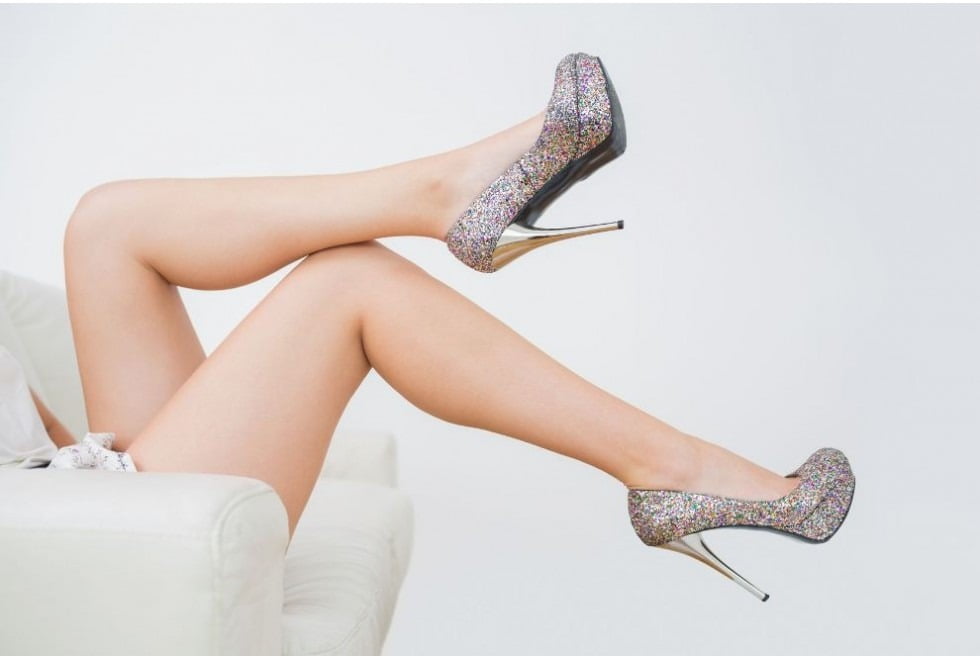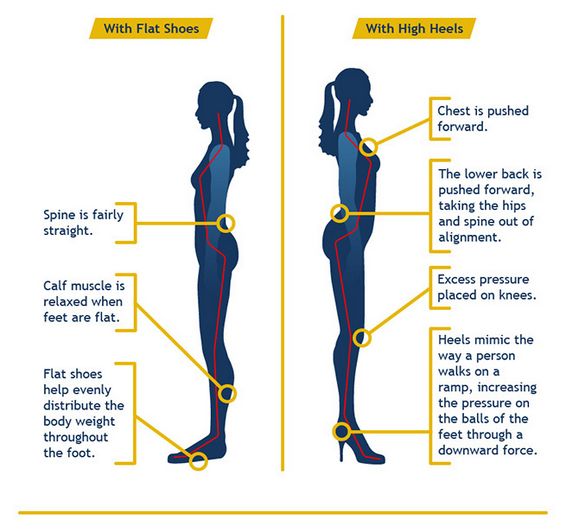“High heels te nache, tan tu badi jache”, this famous Bollywood track is in rage these days. No doubt high heels have signified femininity and glamour for generations. These fashion footwear are something all girls love without knowing how their “well-heeled” pair would affect their overall health.
Statistics show that high heels are one of the biggest factors leading to foot problems in women, with up to a third suffering permanent problems as a result of prolonged wear. These towering shoes can be costly in more ways than one, taking their toll on your spine, hips, knees, ankles and feet, while altering your posture and gait. Have a look at the harmful effects of high heels on your body :
FOOT
Foot suffers the most on wearing high heels. When you stand barefoot, both the heel and toes rest flat on the floor. At this stage, body weight is distributed evenly and equally between the forefoot and hindfoot. When you pack your feet in high heels, the arch becomes flexed and you shift much of your weight on the balls of your feet along with your delicate toe bones. The arch (acts as a shock absorber) which is being strained and lifted, weakens the ligaments. Over time, this can cause chronic overuse injuries, leading to pain. Keeping your feet curved from heel to toe, the transition gets abrupt, forcing you to keep them in a slanting position. It causes damage to the bone, blisters, and ingrown toenails and results in deformities of toes like bunions, hallux valgus and hammer toes.
SPINE
The normal s-curve shape of the back acts as a shock absorber, reducing stress on the vertebrae. Wearing high heels, causes an impact on this curve, leading to lumbar spine flattening. To keep from kneeling over in stacked shoes, you push out your chest, arch your back and thereby decrease the forward curve of your lower back. This unnatural and poor alignment stresses your lumbar erector spine muscle which leads to back pain.
ANKLE
Wearing high heels can strengthen the ankle initially but leads to weakening over time. High heels impair muscle balance by forcing the ankles to bend forward, a position that could lead to instability and restrict the circulation of blood in your lower limbs.
All this puts a little pressure on your ankle and since ankles are not built to take that much pressure, falls and twisted or sprained ankles are quite common.

High heels can cause nerve and bone damage in women’s feet
CALVES
Women who wear high heels for years develop chronically short muscles and tendons. It makes the calf muscle much thicker and stiffer. And when they try to wear flat shoes again, their calves hurt because the tendon cannot stretch sufficiently.
KNEES
Wearing high heels is a common cause of knee pain. It prematurely ages knee joints and could lead to Osteoarthritis. The higher the heels, the more likely the knee would bend during specific phases of their walk. This puts a lot of strain on the knee joints. For women who are overweight, the damage is even worse.
If you can’t avoid wearing high heels then you might consider the following strategies for mitigating the ill effects.
STRETCHING
Do simple stretchings of your calf muscles and feet. Stand on the edge of a step with your shoes off. With your weight on the balls of your feet and your heels extending off the edge, drop your heels down to stretch.
You can also put a pencil on the floor and try to pick it up with your toes.
SHOP TIMELY
Always buy your high heels in the afternoon when your feet are at the largest. So that when your legs expand, the shoe size is just nice and over-cramping of your toes can be avoided.
CHOOSE SENSIBLE HEELS
Do not go for narrow, stiletto-type high heels with a pointed-toe design as it offer less surface area and put more stress on the foot
Select shoes with low heels – an inch and a half or less with a chunky heel, wedge or even a platform; a slightly thicker heel will spread the load more evenly.
ADD ORTHOTICS
Wear an over-the-counter soft shoe insoles to prevent the foot from slipping. This will reduce the impact on your knees and can make the tottering heel more stable.

USE COMMUTER SHOES
Alternate your shoe choice throughout the day or from one day to the next. Don’t wear your high heels all day and save those four inches for carpets and cork floors of the office. Wear more comfortable shoes, such as athletic or walking shoes for commuting to and from work. Use a supportive flat shoe on unforgiving concrete. Wearing shoes that allow your body to move naturally during walking will allow your feet, legs, hips and back to stretch.
Your feet are your base of support. If they are not happy, nothing above them will be. Seriously work on these tips and avoid the problems that develop over time. These might lessen the harmful effects of wearing high heels.

